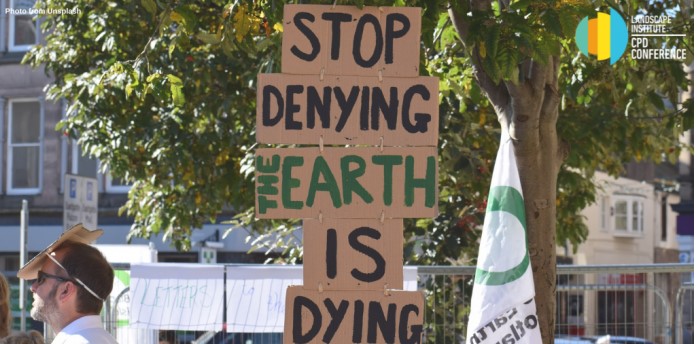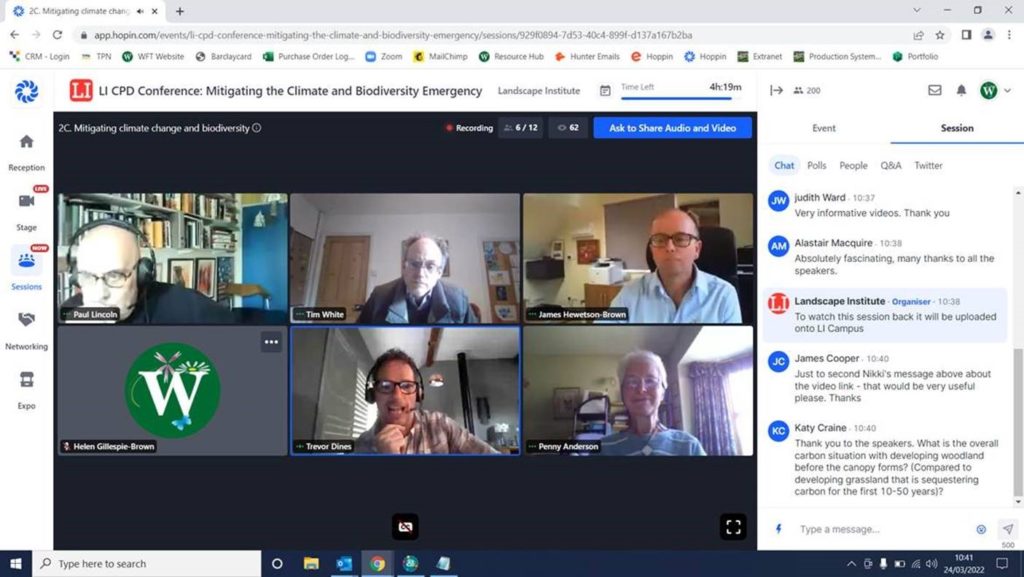The Landscape Institute recently held a conference that brought together natural and built environment experts to discuss the climate emergency.
The conference, entitled ‘Mitigating the Climate and Biodiversity Emergencies’, was delivered virtually over three days.

The conference debated a number of important themes around mitigating the climate emergency and delegates heard from a range of established speakers on the topic. There was also the opportunity to contribute to the debate by connecting and networking with people from across the landscaping profession and wider, associated fields.
The conference attracted a great range of contributors; not just landscape architects, but representatives from a much wider range of related industries such as transport, housing development, engineers, research institutes, and aggregate manufacturers. This diversity resulted in a rich perspective, with enhanced insight into potential design considerations.
On Day One, Anthony Dewar, Professional Head Buildings and Architecture, Network Rail, together with Matt Winfield, England Director at Sustrans and Selina Mason, Director of Masterplanning, Lendlease debated “what are the contradictions for landscape designers when designing for Net Zero?”
In attendance at this discussion, we were interested to hear from the contributing parties that the main barriers to adopting more biodiverse, nature-based solutions can be summarised as follows:
- The resource, time and cost involved with maintenance;
- Understanding who owns what piece of land and managing multiple stakeholders;
- The transitory nature of land use, particularly in areas involving infrastructure as that can regularly change;
- The safety culture that is becoming more stringent, meaning there are more rules to prevent maintenance around transport routes etc.

The first day also included an interactive panel discussion “4 months post COP26 – UK Built Environment Declares”, whereby delegates were able to ask questions and discuss how the sector can collaborate to mitigate the climate and biodiversity emergency.
Day Two featured key industry players and international speakers and provided an international perspective on designing sustainable futures, showcasing how China is attempting to reduce carbon emissions through their work.
Lord Debden, (Chairman of the Climate Change Committee) opened Day Three of the event with a speech outlining work being carried out by the Climate Change Committee and what this means for the landscape sector.
The final day of the event was also the Wildflower Turf Ltd live session, and we were thrilled to be joined by 63 delegates.

Our three guests for the session were Tim White (Tim O’Hare Associates), Penny Anderson (retired ecologist), and Dr Trevor Dines (Consultant Botanist) and our session was titled; ‘Mitigating climate change and biodiversity loss through habitat from the ground up’.
The premise of our CPD workshop was to acknowledge that the lure of new technological advances, or macro scale green infrastructure innovations, takes attention away from the important building blocks, sometimes on a micro-scale, upon which we can build ways to protect our planet.
With the assistance of our esteemed panel of experts, delegates delved into the following:
- How the soil beneath our feet provides a big key to helping mitigate climate change and with careful management can reverse the biodiversity decline we are facing.
- How carbon sequestration differs by soil and habitat type and how this can positively influence landscape design and planting choices.
- How managing, or renovating, the species-rich habitats we already have can go a long way to improving UK biodiversity nationwide.

The CPD workshop session was facilitated by our Managing Director, James Hewetson-Brown, and the conversation was lively with an excellent level of engagement and many interesting and topical questions were asked.
The session was also recorded and can be accessed via the LI Campus site here. It’s very much worth a listen!
“Essentially, all life depends upon the soil … There can be no life without soil and no soil without life; they have evolved together.”
Charles E. Kellogg, USDA Yearbook of Agriculture, 1938.